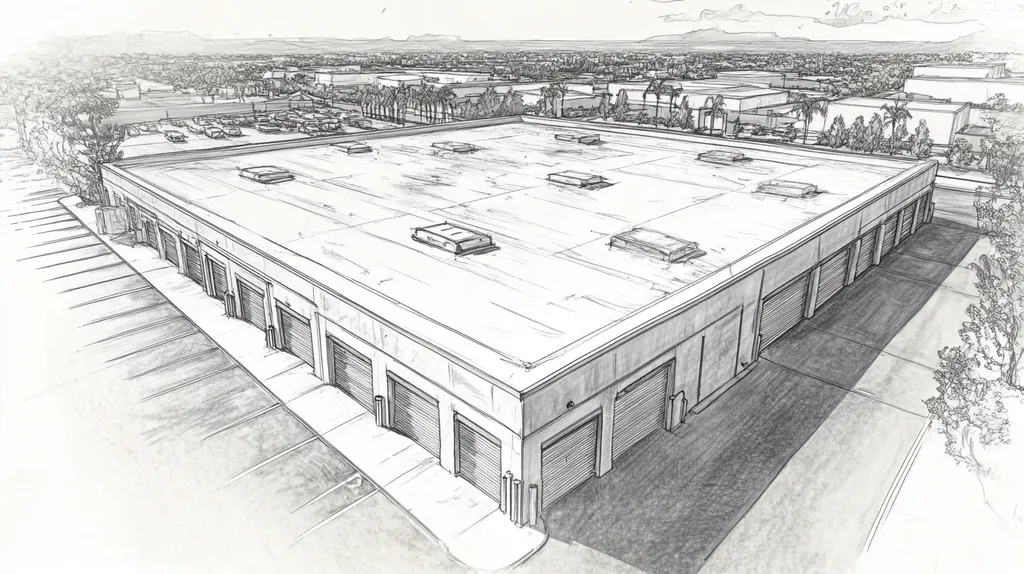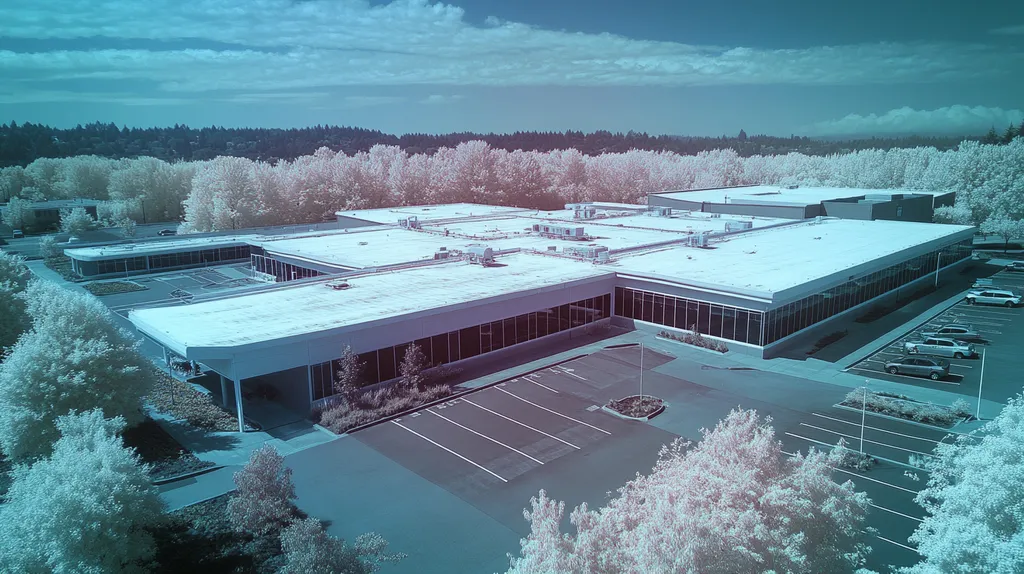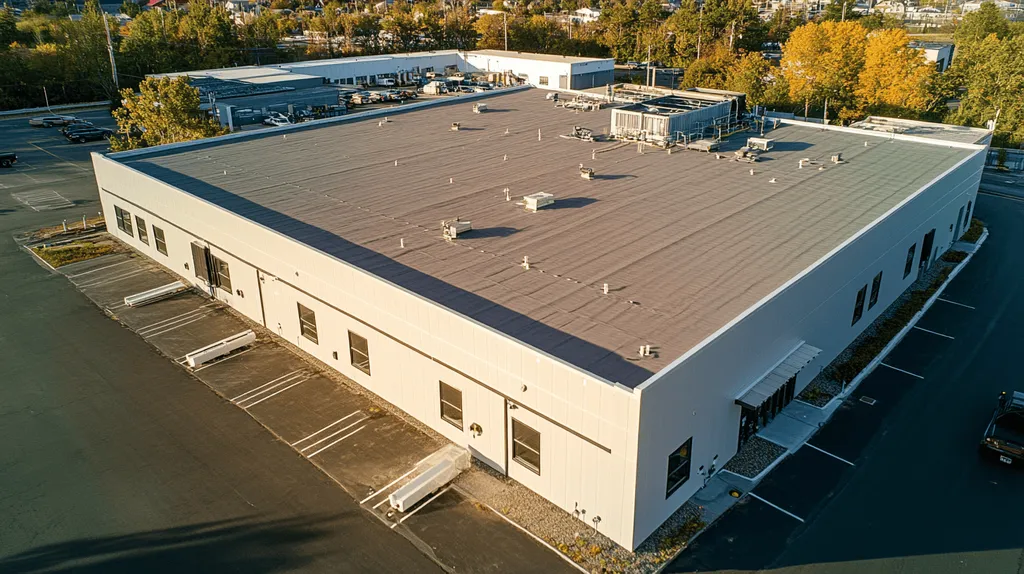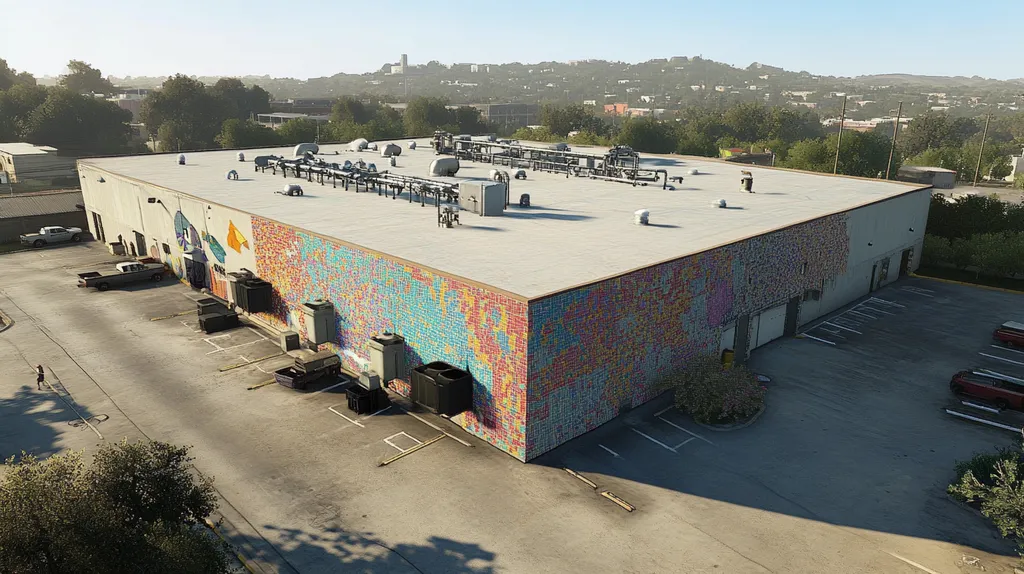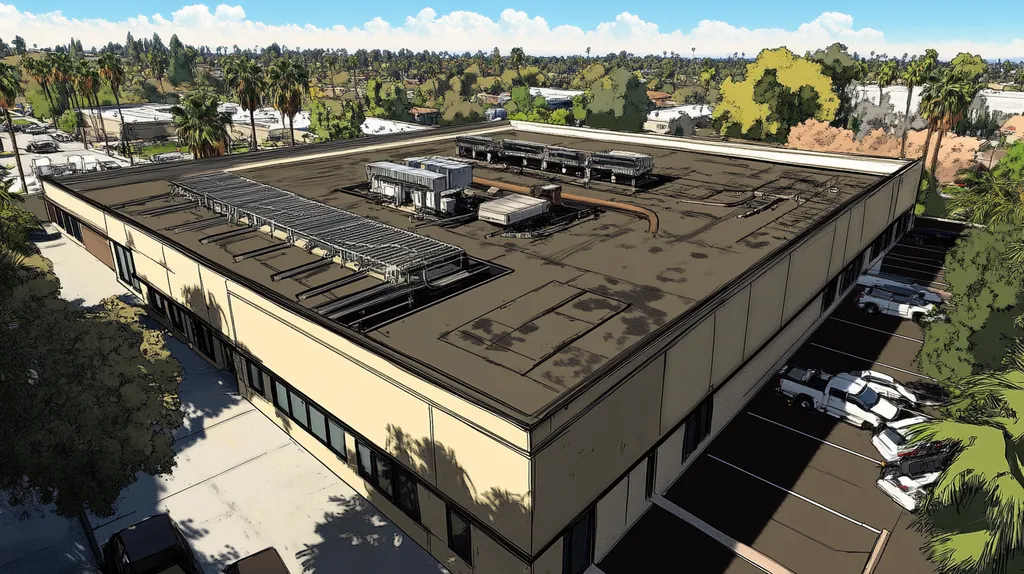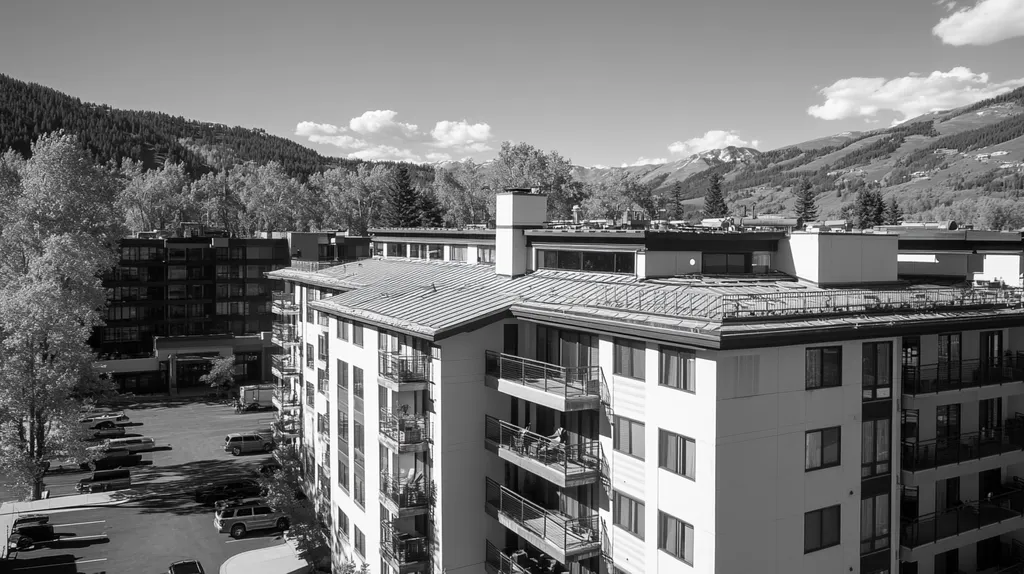In the high-stakes world of commercial roofing, proper documentation isn’t just paperwork—it’s protection. Industry data shows that over 60% of roof coating failures stem directly from poor documentation practices, leading to millions in preventable damage annually.
From warranty disputes to regulatory compliance, the consequences of inadequate documentation can devastate both contractors and property owners.
This comprehensive guide breaks down the essential components of roof coating documentation, offering practical strategies to safeguard your projects and protect your investments.
SECTION 1: THE BASICS EXPLAINED
The importance of thorough roof coating documentation cannot be ignored. Inadequate documentation can lead to expensive blunders, like unexpected roof failures or even legal entanglements. To put it bluntly, research indicates that over 50% of roofing issues originate from poor documentation and communication. Grasping the basics of roof coating documentation is crucial for ensuring project success and safeguarding your financial commitment.
What It Is (In Plain Language)
Roof coating documentation encompasses all the records and information gathered during a roof coating project. This includes specifications, inspection reports, and application techniques. Solid documentation keeps track of every step, boosting accountability and transparency.
It acts as a guide for both contractors and property owners, clarifying the materials utilized and the processes undertaken. This information is not just helpful but crucial for maintenance, warranty claims, and future repairs. Think of it as the roadmap for the roof’s lifecycle.
Furthermore, accurate documentation ensures compliance with industry standards and local regulations. In the event of inspections or audits, clear records show that the project met all essential requirements.
Without thorough documentation, property owners may struggle to counter warranty claims or validate the work done by contractors.
Why It Matters (To Your Building)
Comprehensive documentation directly influences the longevity of your roof. When records are accurate, they can pinpoint when maintenance is needed and reveal any recurring problems. This proactive stance can notably prolong a roof’s lifespan, avoiding the hefty costs of premature replacements.
In addition, proper documentation guarantees that everyone involved understands their roles and what’s expected. This clarity helps minimize disputes between property owners and contractors, resulting in smoother project execution and fewer disruptions to daily operations.
A well-documented project builds trust among all stakeholders. When details are transparent and easily accessible, property owners can make informed decisions about future repairs or upgrades, thus ensuring their investments are protected for the long haul.
In a market where reputation is everything, a project backed by solid documentation can position a contractor as a reliable player, reinforcing their professionalism in the eyes of potential clients.
How It Works
The roof coating documentation process kicks off long before installation begins. A detailed plan outlining project goals, required materials, and timelines should be established. This foundational document sets the stage for all subsequent documentation.
As the project unfolds, important milestones must be documented, including surface preparation, material application, and inspection results. Supplementing these records with photographs, notes, and checklists adds layers of clarification and detail.
Once the project wraps up, a comprehensive summary report that covers the entire process is essential. This report should include details on final inspections, maintenance schedules, and any warranties provided on materials and workmanship.
Lastly, it’s vital to store all documentation securely and make it easily accessible. Leveraging digital platforms for organization and storage can enhance future reference and foster seamless collaboration among team members.
SECTION 2: PRACTICAL APPLICATIONS
In the cutthroat arena of commercial roofing, effective documentation for roof coating projects is not just a good idea—it’s a necessity. Did you know that over 20% of commercial roofs suffer coating failures within the first few years? Clear and comprehensive records can make the difference between a reliable roof and a money pit. This section explores the common uses for roof coatings, the critical moments when documentation is essential, and how coatings interact with other building systems.
Common Uses & Examples
Roof coatings aren’t just fancy paint jobs; they serve multiple vital purposes across different roofing systems. For example, applying a roof coating can add years to the lifespan of built-up roofs and single-ply membranes while preventing the quick onset of deterioration. A well-noted application of an acrylic coating can significantly ramp up UV resistance and energy efficiency.
Think restoration, not replacement. Using coatings, like a silicone application on an aging TPO roof, can save both money and materials. Thorough documentation helps ensure that the application procedures are not just guesswork, but are backed by reliable data, ensuring optimal adhesion and performance.
With a precise project plan and well-documented specifications, contractors can maintain consistent application techniques. This level of professionalism not only helps secure manufacturer warranties but also boosts overall system longevity.
When property managers grasp the specific benefits of coatings, they can make informed, strategic decisions. Plus, diligent documentation during coating applications allows for tracking the project’s success over its entire lifecycle.
When You Need It Most
The stakes are highest during the initial stages of a roof coating project, where proper documentation is crucial. Conducting detailed pre-application inspections ensures that any existing issues are fully addressed before laying down coatings. Ignoring to document these findings can lead to future disputes that might end in costly repairs.
Documentation is equally vital during the application phase. Keeping detailed records of material usage, environmental conditions, and crew performance can greatly affect the project’s outcome. Attention to these details can drastically cut the risk of coating failures down the road.
Warranties aren’t just a safety net; they’re often tied to thorough documentation. Manufacturers may reject warranty claims without a comprehensive record of the application process. This means property owners could end up footing the bill for expensive repairs without that crucial paper trail.
By identifying when accurate documentation is most pressing, facility managers can allocate resources wisely, assuring every phase of the project is thoroughly covered. This proactive mindset minimizes risks and lays the groundwork for successful project execution.
Interactions With Other Systems
Roof coatings don’t exist in a vacuum; their effectiveness is reliant on how well they work with other building systems. If a coating gets slapped over a damaged membrane without prior documentation, expect headaches when the coating fails to adhere as anticipated.
Drainage systems also feel the ripple effect. If a new coating alters water flow without thorough planning, you’re looking at ponding and eventual structural damage. Meticulous documentation helps ensure that necessary adjustments to drainage solutions are factored in during the coating process.
Energy-efficient coatings can influence building systems like HVAC as well. Proper comms and documentation allow for a comprehensive understanding of how these systems work together, unlocking improved energy savings and enhanced overall performance.
Communication remains a key player in mitigating these risks. When interactions with other systems are documented, stakeholders can make more informed decisions, creating a sustainable path toward roofing system longevity.
SECTION 3: KEY TERMINOLOGY DECODED
In the bustling world of commercial roofing, understanding the lingo isn’t just helpful—it’s critical. Miscommunication over key terms can turn a straightforward project into a costly catastrophe. For instance, applying the wrong adhesive type can spell disaster for an entire roof system. This section breaks down essential roofing terminology, transforming complex jargon into clear, actionable insights that empower better decision-making during coating projects.
Essential Terms Explained
Having a grasp on crucial roofing terminology paves the way for effective communication. Terms like “membrane,” “substrate,” and “coating thickness” need to ring clear for everyone involved. The “membrane” serves as the waterproof layer, while the “substrate” is the supporting material beneath it. Understanding these definitions helps property owners verify that the materials specified meet their expectations.
Another key term is “UV resistance,” which denotes how well a coating can withstand harmful ultraviolet light. This is critical for durability; poor UV resistance can lead to premature roof failure. Property managers who are fluent in these terms can engage in deeper, more productive discussions with contractors, ensuring the materials used align with the property’s needs.
Additionally, look out for “adhesion,” which measures the bond strength between the coating and membrane. Strong adhesion is a must-have for lasting performance. Property owners should focus on products with established adhesion properties to sidestep future issues. Clear definitions form the backbone of effective project planning.
Finally, the phrase “life cycle cost” covers the total expense associated with a roofing system over its entire life, factoring in installation, maintenance, and replacement. Grasping these numbers upfront can lead to smarter financial strategies for property owners.
Industry Jargon Translated
The roofing game is packed with jargon that can leave property owners scratching their heads. Take “flashings,” for instance—these materials help channel water away from vulnerable areas like roof joints and chimneys. Familiarity with flashings leads to a better grasp of moisture management, reducing the risk of leaks and water damage.
What about “thermal resistance,” or as the pros call it, “R-value”? This measures how well insulation works. A higher R-value means better insulation and energy efficiency. Property owners should seek coatings that bolster thermal resistance, translating into lower energy bills over time.
“Polyurethane” and “acrylic” are the heavyweights when it comes to roof coatings. Polyurethane is revered for its remarkable durability, while acrylic offers impressive flexibility and UV resistance. Understanding these options helps facility managers pick the perfect product for their unique environmental conditions.
Lastly, there’s the term “field adhesion tests,” which check how well the coating sticks to the substrate post-application. Knowing about these tests allows property owners to validate the integrity of their roofing system right after installation, potentially sidestepping costly repairs down the line.
Measurement & Units Simplified
Measurement plays a pivotal role in roofing documentation, yet it can complicate the decision-making process. Roofing materials are generally measured in square feet, and property owners need a solid understanding of how to calculate roof area. This accuracy ensures proper material ordering and helps avoid overspending.
The term “mil” in roofing denotes one-thousandth of an inch and is routinely used to specify coating thickness. For example, a coating with a thickness of 20 mils translates to 0.020 inches. Being able to interpret these measurements can greatly influence product selection and performance expectations.
Understanding “wattage per square foot” is also crucial, especially for energy-efficient roofing systems. This measurement indicates how much energy a roof reflects. A higher number translates into lower energy expenses—a game-changer for budget-minded property owners.
Finally, calculating the “dry film thickness” (DFT) after coating application is vital for achieving lasting results. DFT measures the thickness of the dried coating layer, ensuring it adheres to manufacturer specifications. Without a proper DFT measurement, the effectiveness of the coating could be compromised, inviting future problems.
SECTION 4: DECISION FACTORS
When it comes to roof coating projects, making informed decisions isn’t just important—it’s critical. The stakes are sky-high; the wrong choice can lead to eye-watering repair bills, plummeting energy efficiency, and collapsing building integrity. Cost, performance, and longevity are the three crucial factors that should dominate every decision-making process. Navigating these considerations thoughtfully can lead to roofing success that stands the test of time.
Cost Considerations
For many property owners, budgets are the first stop in the decision-making journey. Understanding the upfront costs—think labor and materials—is vital, but an astute owner knows not to stop there. It’s equally essential to evaluate long-term savings that could come from decreased energy bills and extended roof life.
Opting for higher-quality coatings often means spending a bit more upfront, but that choice promises significant cost benefits down the line. A low-priced option might sound tempting, but it could lead to a cycle of repetitive maintenance or even early replacement. A careful assessment of all potential costs against the coating’s expected lifespan can clear up the financial fog.
Conducting a life-cycle cost analysis enables a holistic view of your investment, pitting initial costs against long-term operational expenses. This analysis serves as a compass for identifying the most cost-effective solutions. Ultimately, a grasp of these financial intricacies ensures that decisions are both informed and strategic.
Performance Trade-offs
Performance isn’t merely a buzzword; it’s influenced by various factors, such as your climate and how the building is used. Choosing coatings tailored for specific environmental conditions can significantly mitigate risk and fortify building protection. For example, reflective coatings shine in hot climates by slashing cooling costs.
Don’t underestimate the role of coating thickness in performance outcomes. Thicker applications tend to provide better durability and weather resistance, but those benefits often come at a higher upfront cost. Property owners must engage in a balancing act between initial investment and long-lasting performance advantages.
Compatibility with existing roofing materials is another crucial consideration. Some coatings might struggle to bond with older materials, setting the stage for premature failure. A thorough inspection and dialogue with roofing professionals can save serious headaches later on.
Lifespan & Durability Factors
The longevity and durability of roof coatings significantly impact long-term building performance. Most coatings come with warranties that range from 5 to 20 years, showcasing their anticipated durability. A closer look at warranty terms can empower property owners to avoid costly setbacks down the road.
Environmental factors, including UV exposure and humidity levels, can drastically influence how a coating performs. For instance, roofs subjected to extreme climates often require specialized coatings that can withstand punishing temperatures and severe weather. A customized approach can enhance the effectiveness of your chosen coating.
Lastly, regular inspections and maintenance are essential for maximizing the lifespan of any roof coating. Property managers should create and stick to a schedule of ongoing evaluations to catch potential issues early. This proactive approach can prevent unexpected replacements and extend the life cycle of the roofing system.
SECTION 5: COMMON CHALLENGES
Roof coating projects face a range of challenges that can derail timelines and budgets. Issues like poor adhesion and unexpected weather delays can push expenses skyward and extend project lifetimes. Alarmingly, industry statistics reveal that improper documentation accounts for about 30% of project overruns. For property owners and facility managers, grasping these challenges is essential for steering projects to successful conclusions—on time and to budget.
Frequent Problems & Solutions
A common headache in roof coating projects is inadequate surface preparation. If surfaces aren’t cleaned and primed correctly, expect coatings to fail early, leading to premature replacement. A stringent inspection checklist before application can significantly reduce this risk.
Another hurdle is the weather. Installing coatings in less-than-favorable conditions can mess with curing times and overall performance. Implementing a proactive weather monitoring plan can be a game changer, helping contractors dodge these pitfalls.
Let’s not forget about documentation—or the lack of it. Miscommunication about project progress can easily arise when documentation is subpar. Utilizing standardized forms and detailed checklists can enhance transparency for everyone involved, from contractors to property managers.
Confronting these frequent problems head-on can save precious time and resources, fostering a smoother project execution while extending the life of the roof coating.
Warning Signs To Watch For
Early detection of warning signs can differentiate minor fixes from costly repairs. Bubbling or blistering on the roof surface often suggests inadequate adhesion or moisture issues. Tackling these problems early can avert significant deterioration down the line.
Cracks or peeling coating serve as red flags, indicating a possible coating failure that might necessitate retreating or complete replacement. Don’t ignore these signs—swift action can save the day.
Lastly, keep an eye out for leaks or water pooling on the roof, as these often hint at hidden troubles. Routine inspections, especially after severe weather, can catch these issues while they’re still manageable.
By staying vigilant and recognizing these warning signals, property owners can make informed maintenance and repair decisions, safeguarding their investments.
Preventative Approaches
Employing preventative measures is crucial for the success of any roof coating project. Regular maintenance is a fundamental strategy. Frequent inspections can highlight wear and tear before it escalates into larger headaches.
Choosing high-quality materials also pays off. Opting for premium coatings designed for specific environmental challenges can lead to greater longevity and enhanced performance.
Establishing a thorough documentation protocol is another powerful weapon in the preventative arsenal. This should include detailed records of every project phase—from preparation to application—minimizing confusion and fostering clear communication.
Lastly, working with trained professionals who truly understand the intricacies of roof coatings is paramount. Their expertise can significantly influence project outcomes, alleviating future headaches for property managers.
SECTION 6: NEXT STEPS & RESOURCES
When it comes to roof coating projects, the documentation process is not just beneficial; it’s absolutely essential for safeguarding your commercial property investments. Forgetting to ask the right questions or referencing industry standards can spell disaster, resulting in costly mistakes and extended project timelines. Facility managers must tap into the right resources to significantly elevate project success. This section navigates through pivotal inquiries, critical guidelines, and invaluable resources that can streamline roof coating projects.
Questions To Ask Providers
Engaging with roof coating providers isn’t just about chatting—it’s about digging deep with the right questions to secure project success. Start with their experience in handling your type of building. A contractor familiar with the unique needs and challenges your property presents will deliver smarter solutions.
Dive into the specifics of the coating materials and application methods they propose. Knowing the performance characteristics, warranties, and expected lifespans of these coatings lets you make fully informed decisions.
Next, don’t gloss over their documentation protocol. Will they outline project timelines, provide inspection reports, and offer a final evaluation? Open communication in these areas is key to fostering lasting results and adhering to industry standards.
Finally, ask about their post-project support. Reliable providers don’t disappear after the job; they should have a plan for addressing any issues that crop up once the work is complete.
Industry Standards & Guidelines
Following industry standards isn’t optional; it’s a must for achieving successful roof coating outcomes. The American National Standards Institute (ANSI) and the National Roofing Contractors Association (NRCA) have laid down guidelines that cover everything from material selection to application techniques.
These standards serve as quality benchmarks, ensuring that coated roofs can maximize durability and performance. For instance, they detail how to prep surfaces and the ideal ambient conditions for application.
Regularly updated guidelines reflect the latest advances in materials and technologies. Staying on top of these changes can help property owners make informed choices that embrace the most innovative solutions out there.
Consulting with contractors who stay current with industry standards can be a game changer. Engaging professionals who prioritize compliance opens the door to better warranties and more satisfying project outcomes.
Further Learning Simplified
Want to boost your knowledge on roof coating projects? Plenty of resources await your exploration. Online courses from industry associations offer valuable insights into cutting-edge techniques and technologies, covering best practices that are actionable and relevant.
Join webinars and workshops led by roofing experts to dive into hands-on learning. These events allow participants to engage with specialists and get answers to specific project queries.
In addition, industry publications and websites feature articles, case studies, and FAQs that clarify complex topics, keeping you updated on trends and new products.
Finally, connect with local roofing associations to network with peers who face similar challenges, enhancing your knowledge and project management skills in the process.
The Bottom Line
With over 60% of roof coating failures tied directly to documentation lapses, the stakes couldn’t be higher for commercial property owners and contractors alike.
A well-documented coating project isn’t just paperwork—it’s protection against costly failures, warranty disputes, and regulatory headaches that plague the industry.
The difference between a successful coating installation and a costly disaster often comes down to maintaining clear, comprehensive records throughout every project phase.
By implementing robust documentation practices, following industry standards, and leveraging available resources, stakeholders can significantly reduce risk while maximizing their roofing investments.
In an era where building performance and sustainability matter more than ever, proper documentation isn’t optional—it’s essential for project success and long-term roof protection.
FREQUENTLY ASKED QUESTIONS
Q. What is commercial roof coating documentation?
A. It refers to all the records kept during a roof coating project, like specifications and inspections. This documentation is essential for maintenance, warranty claims, and ensuring compliance with industry standards. Think of it as a comprehensive guidebook for your roof’s lifespan, covering everything from materials used to application techniques.
Q. When is documentation critical for industrial roof coatings?
A. Documentation is paramount during initial inspections and the application phase. Accurate records ensure any pre-existing issues are addressed and track material usage in real-time. This diligence can prevent costly repairs down the road and guarantee that warranty claims won’t hit dead ends due to missing documentation.
Q. What key terms should I know about commercial roofing?
A. Familiarize yourself with terms like “membrane,” “substrate,” and “adhesion.” Understanding these concepts helps ensure that the materials and processes used meet your expectations. Being fluent in roofing jargon empowers better communication with contractors and improves decision-making throughout your coating project.
Q. What cost factors should I consider for my roof coating?
A. Consider both upfront costs for labor and materials and long-term savings. Higher-quality coatings may require more investment initially but lead to reduced energy expenses and extend roof life. Conducting a life-cycle cost analysis can help ensure you’re making a financially savvy choice for your property.
Q. What are common challenges in commercial roof coating projects?
A. Frequent challenges include poor surface preparation and weather-related installation issues. Inadequate documentation can also lead to numerous problems, causing delays and unexpected costs. Addressing these challenges proactively through thorough inspection checklists and weather plans can keep your projects on track.
Q. What should I ask my roofing contractor before starting?
A. Ask about their experience with your building type and specific coating materials. Inquire about their documentation practices and post-project support. This conversation helps clarify expectations and ensures that you’re partnering with a contractor who values transparency and thoroughness.
Q. How can I maintain my commercial roof coatings?
A. Regular inspections and maintenance are crucial for extending the life of your roof. Schedule routine evaluations to catch minor issues before they escalate. Additionally, prioritize high-quality materials and thorough documentation practices to ensure your coatings perform optimally against environmental stresses.

